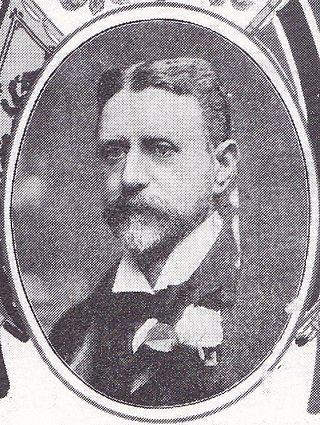Top Qs
Timeline
Chat
Perspective
Southport (UK Parliament constituency)
Parliamentary constituency in the United Kingdom, 1885 onwards From Wikipedia, the free encyclopedia
Remove ads
Southport is a constituency in Merseyside which has been represented in the House of Commons of the UK Parliament since 2024 by Patrick Hurley of the Labour Party.
Remove ads
Boundaries
Summarize
Perspective
Historic

1885–1918: The Borough of Southport, the Sessional Division of Southport, and the parishes of Blundell, Great and Little Crosby, Ince, and Thornton.
1918–1983: The County Borough of Southport.
1983–2024: The Metropolitan Borough of Sefton wards of Ainsdale, Birkdale, Cambridge, Dukes, Kew, Meols, and Norwood.
Current
Further to the 2023 Periodic Review of Westminster constituencies which came into effect for the 2024 general election, the constituency was defined as being composed of the following as they existed on 1 December 2020:
- The Metropolitan Borough of Sefton wards of: Birkdale; Cambridge; Duke’s; Kew; Meols; Norwood.
- The Borough of West Lancashire wards of: Hesketh-with-Becconsall; North Meols; Rufford; Tarleton.[2]
The four, largely rural, West Lancashire Borough wards were transferred from South Ribble, offset by the loss of Ainsdale ward to Sefton Central.
Following a local government boundary review in West Lancashire which came into effect in May 2023,[3][4] the constituency will now comprise the following from the 2024 general election:
- The Metropolitan Borough of Sefton wards of: Birkdale; Cambridge; Duke’s; Kew; Meols; Norwood.
- The Borough of West Lancashire wards of: Burscough Bridge & Rufford (part); North Meols & Hesketh Bank; Tarleton Village.[5]
The constituency covers the whole town of Southport and the localities of Birkdale, Blowick, Churchtown, Crossens, Highpark, Hillside, Kew, Marshside, Meols Cop, and Woodvale. It also now includes the West Lancashire villages of Banks, Hesketh Bank, Becconsall, Tarleton and Rufford. It is bordered to the north by Fylde (across the Ribble estuary), to the east by South Ribble, and to the south by Sefton Central and West Lancashire .
Remove ads
History
Summarize
Perspective
Prominent members
In the 19th century, the constituency was represented by George Nathaniel Curzon, who later became the Viceroy of India. Trial barrister Edward Marshall Hall represented the seat from 1900 to 1906, while Sir John Brunner, 2nd Baronet held the seat from 1923 until 1924.
Robert Hudson held the seat from 1931 to 1952. During World War II he was the Minister of Agriculture and Fisheries. He was made a viscount in 1952.
Political history
Until 2024, the constituency had been a Liberal or Conservative seat throughout its history, and marginal for much of that time. It changed hands 11 times between the parties after it was created in 1885, with nine Conservative MPs and eight Liberal or Liberal Democrat MPs in its history.
During the nadir of the Liberal Party, from the 1930s to the 1960s, the constituency became a safe Conservative seat, with absolute majorities from 1931 until 1970 inclusive.
Former Deputy Prime Minister John Prescott was the Labour Party candidate for the seat in 1966 and came in second place.
With the revival the Liberal Party's fortunes in the early 1970s, elections became close contests once again. The constituency changed hands in the 1987 general election, when it was won by Ronnie Fearn of the Liberal Party, for the SDP-Liberal Alliance, shortly before the two parties merged to form the Liberal Democrats. Fearn had contested the seat unsuccessfully for the Liberals throughout the 1970s.
Fearn lost the seat to the Conservatives' Matthew Banks at the 1992 election, one of the few Conservative gains at that election, only to regain it at the 1997 election. The Liberal Democrats held the seat, under John Pugh (after Fearn stood down) in 2001 until 2017.
The seat was one of the eight Liberal Democrat seats that survived its national vote share collapse at the 2015 general election, although there was a higher-than-average drop in the Liberal Democrats' vote share. Pugh opted not to re-contest the seat in the 2017 general election, at which it returned to the Conservatives, the only seat the Tories gained from the Liberal Democrats in 2017 (aside from Richmond Park, which they had gained at a 2016 by-election).
In the 2016 referendum on the UK's membership of the European Union, the Metropolitan Borough of Sefton, of which the constituency is a part, voted to remain in the European Union by 51.9%.[6] Given its demography, it is estimated that Southport voted to remain by 54%.[7]
In 2019, a resurgent Labour vote pushed the Liberal Democrats into third place for the first time since 1966 with the seat becoming a Tory-Labour marginal. Labour won the seat from the Conservatives in 2024, making it the first time Labour has held the seat, as well as the first time Labour has held every seat in Merseyside.
Remove ads
Constituency profile
This is a generally affluent seaside town in the borough of Sefton which has not suffered from significant deprivation compared to its Lancashire counterpart Blackpool. Workless claimants (registered jobseekers) were in November 2012 close to the national average of 3.8%, at 4.0% of the population based on a statistical compilation by The Guardian.[8] Southport is home to the Royal Birkdale Golf Club, and Ainsdale Beach is part of the Sefton Coast Site of Special Scientific Interest.
Members of Parliament
Remove ads
Elections
Elections in the 2020s
Elections in the 2010s
Elections in the 2000s
Elections in the 1990s
Elections in the 1980s
Elections in the 1970s
Elections in the 1960s
Elections in the 1950s
Elections in the 1940s
Elections in the 1930s
Elections in the 1920s

Elections in the 1910s

Elections in the 1900s

Elections in the 1890s

- Caused by Naylor-Leyland's death.
- Caused by Curzon's appointment as Viceroy and Governor-General of India.
Elections in the 1880s
Remove ads
See also
Notes
References
Sources
External links
Wikiwand - on
Seamless Wikipedia browsing. On steroids.
Remove ads


